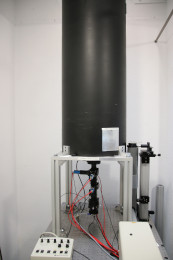 |  | |
| Lidar | ||
The LIDAR (Light Detection and Ranging) is an optical radar that allows vertical probing of the atmosphere and provides, by active remote sensing, high spatio-temporel resolution profiles of atmospheric constituents such as water vapour, aerosols and upper tropospheric clouds (cirrus). For this, it works by detecting and measuring the laser light backscattering to the reception system composed of mirrors, optics and electronic systems to convert the photons into an electrical signal. The data produced allow phenomena linked to the presence of aerosols above Clermont-Ferrand to to be observed in real time, in particular: - Fine particle pollution episodes - Volcanic ash in the troposphere and the lower stratosphere after a major eruption (Ex: Eyjafjalljökull in 2010) - The passage of desertic dust, and of particles linked to biomass burning large scale episodes. - Spatial characterization of cirrus type clouds. In all cases, the lidar will provide information on the altitude and thickness of the phenomenon. |  | |
| Downloads and links | ||
| | DataCite - XML - JSON | |
| Data access | https://www.opgc.fr/SO/mesures/lidarTR.php | |
About this resource | ||
| Keywords | ||
Ressource Type | PhysicalObject | |
| License | Creative Commons Attribution 4.0 International | |
Funding references | ||
| Creators | Jean-Luc Baray, Patrick Freville | |
Creation date | ||
| Publisher | OPGC, LaMP | |
Publication year | 2023 | |
Technical information | ||
Spatial extent | ||
| Formats | ||
| Software | ||
| Lineage | ||